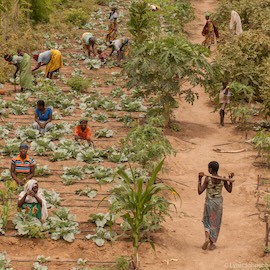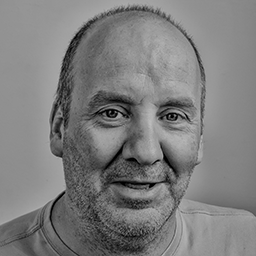A few years ago, a landmark study by Project Drawdown (2017) revealed a powerful truth: Investing in girls’ education and women’s wellbeing — including their ability to support themselves and provide for their children — is among the most effective climate solutions on the planet. According to the report, these strategies could reduce CO₂ emissions by up to 119 gigatons by 2050, outperforming many technical and behavioral fixes like improving refrigeration, reducing food waste and promoting plant-rich diets.
Yet on the ground, a troubling dynamic persists. In 2022, UNICEF issued a sobering warning from the Horn of Africa: Due to drought and poverty, the number of children at risk of dropping out of school had tripled, from 1.1 million to 3.3 million, in just months, putting girls at greater risk of child marriage. A few years later, a 2024 Save the Children report revealed that every 30 seconds, a girl is married off in countries classified as “fragile” — i.e., those that are struggling with weak governance and crises like wars and climate disasters.
Climate vulnerability is a key factor behind the risks facing girls in these countries. Yet although there are many funders investing in education and training for young women and girls in Africa, the impact of these investments, especially on climate resilience, often fades too quickly. When a family’s survival is at stake, particularly in rural communities governed by tradition, the promise of education struggles to compete with the immediate need for food and caregiving support. This is where the education gap widens, and where the futures of the most vulnerable — young girls — are sacrificed in the brutal economic calculus poor households must perform.
These stark realities create a damaging cycle: Uneducated girls grow into women with limited economic opportunities, raising daughters who face the same challenges, and perpetuating vulnerability across generations. From my years of work in this field, it has become clear that the problem isn’t a lack of good intentions from the drivers and funders of multiple interventions. It is the failure to address the underlying power dynamics that keep women and girls trapped in a cycle of limited agency.
Pragmatic solutions are urgently required — interventions that focus on the structural and external factors preventing girls from staying in school, accessing jobs and achieving financial independence. What, then, is the solution for creating lasting impact that addresses both climate resilience and the quality of life for women and girls?
The answer lies in a critical yet often overlooked factor: asset creation, a simple concept that becomes revolutionary in the context of climate resilience.
The Power of Asset Creation for Women in Africa
Asset creation goes beyond traditional ideas of empowerment. It means building real pathways to economic power and lasting generational change. In this context of women and girls’ empowerment, it means placing tangible, income-generating resources directly into their hands — assets they can own, control and leverage to build financial independence and intergenerational wealth.
The concept must, however, be tailored to local nuances: legal, cultural and environmental. For example, in Cameroon, where land is typically passed down through male lineage, giving women land as a means of empowerment may have limited impact. And while reforms in countries like Rwanda — such as landmark laws granting women equal inheritance rights and joint ownership of marital property, and succession laws giving daughters the same rights as sons — are slowly chipping away at these barriers, land ownership alone isn’t always the immediate solution.
In such contexts, portable and productive assets, like solar irrigation kits or electric motorcycles, can be far more life-changing, creating a path to unlock transformational wealth. We recognise this at Gather Ventures, and it has shaped how we operate. We invest in ventures that both create climate resilience and drive asset creation for women and girls across Africa. Take, for instance, women-owned microprocessors that dry farm produce and transform perishable goods into higher-value products, cutting out middlemen, reducing post-harvest losses and boosting incomes fourfold. Similarly, electric motorcycles, marketed specifically to women by companies like Mobility for Africa, also eliminate middlemen in the agriculture supply chain, reduce commute times and provide a means to transport goods to market. This gives women a tangible asset that not only increases efficiency but also opens up new income-generating opportunities.
Asset creation can also enable women to achieve financial independence. For example, one of our portfolio companies, Giraffe Bioenergy, discovered that many of their women employees often defaulted to using their husbands’ bank accounts because they lacked their own. In response, the company partnered with the local government in Kilifi County, Kenya, to register women for national ID cards, enabling them to receive mobile phones and, with them, access to mobile banking to directly receive their wages. This intervention empowers women to manage their income, pay for their children’s education, improve their health and invest in their families. Its impact extends to the entire household because, as studies have shown, women typically invest more in their children’s health and education than men, when they have control over household finances.
Turning education into economic assets for girls
Though education in the usual sense is simply not enough, asset creation can also involve tailored education designed to equip girls for future-ready, income-generating opportunities. Take Loropio Girls High School in Turkana County, Kenya: The school equips every desk and classroom with networked computer systems, giving students daily access to digital learning tools and extracurricular activities that build tech fluency and confidence. In a world where adolescent girls and young women in low-income countries forfeit an estimated US $15 billion in economic opportunities each year due to gaps in internet access and digital skills compared to their male peers, Loropio is charting a pathway to leadership and economic independence.
As one student, Neira Areng’ shared, “Loropio has given me hope for a better future. Before I joined, my family was negotiating my bride price. Now I have a chance to break the poverty cycle.”
Breaking the cycle for strengthened climate resilience
This is the kind of transformative solution Africa needs. As investors, donors and charities, we must be intentional about supporting these types of context-driven approaches.
Beyond the individual, women’s empowerment creates ripple effects that benefit families and communities. Studies show that children in communities with more educated mothers have higher school attendance rates. Businesses led by women are also more likely to adopt sustainable strategies.
When we back opportunities for girls and women, our strategy should go beyond skill development and job creation to include productive assets capable of driving lasting impact. The evidence is bold and clear: The most effective way to reduce the global carbon footprint and boost economic growth across Africa by 2050 is to invest in the agency of women and girls. Their well-being and ability to stay in school and achieve financial independence are a collective asset for all.
Jo Opot is the Founding Director of Gather Ventures, an impact-focused fund dedicated to backing climate-resilient businesses that drive asset creation for women and girls across Africa.
Photo credit: Solar Electric Light Fund (SELF)
Publisher: Source link






